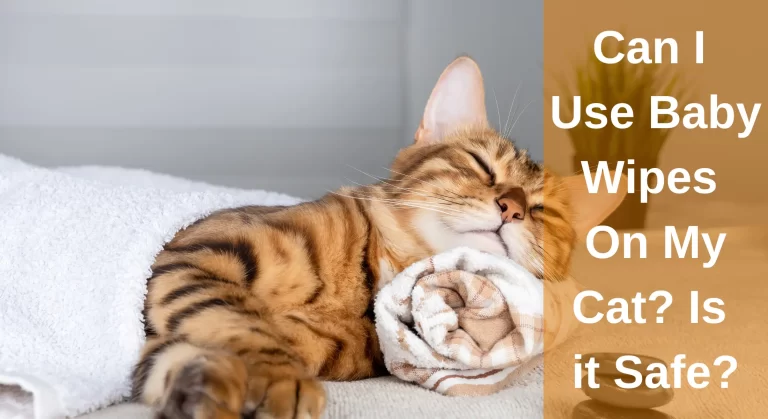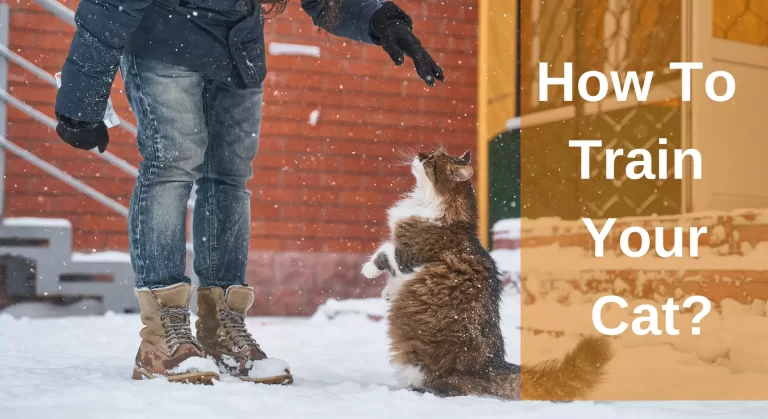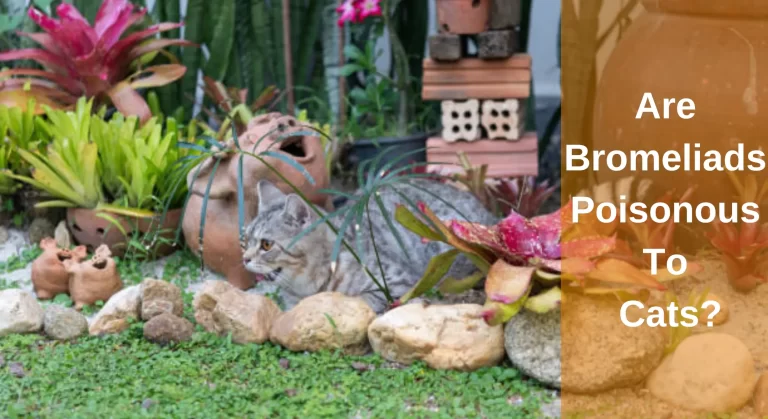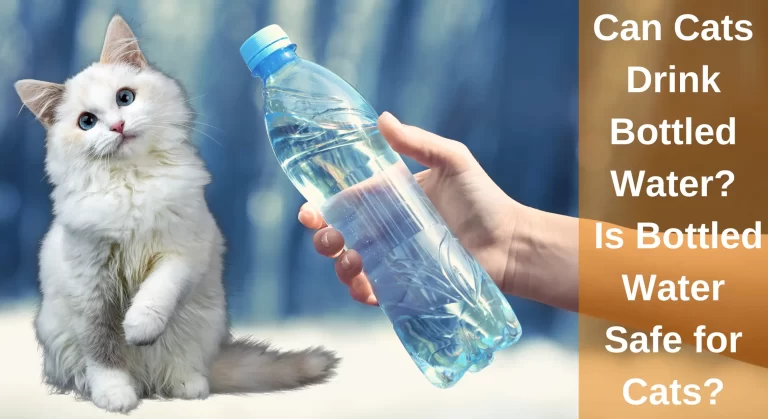A Guide To How To Soften Dry Cat Food?
If you’re a cat owner, you may have seen that your cat doesn’t consume dry food. So, to make your food more appealing to cats, you can soften them by adding moisture to it. This is helpful if you can’t afford to provide your cat with moist canned food at every mealtime. But most frequently ask how we can moist cats’ dry food without damaging its taste quality.
If your cat has sensitive teeth or oral hygiene issues, there are a number of approaches you may use to soften dry food in these circumstances.
There are several ways in which cats’ food can be softened. You can add warm tap water to their regular diet, add a meat-based broth to make food more appetizing, or mix dry with wet food until you find the one they like best. You can also cut the food items into small chunks or put them into a blender for a smoother texture.
However, now you might be thinking about the exact recipes for moistening your cat’s food. So, you’ve arrived at the right site; in this article, I’ll tell you how to make dry cat meals soft without spending lots of money and without making a sloppy mess of their food. Moreover, here you’ll also learn soft food benefits for felines and much more!
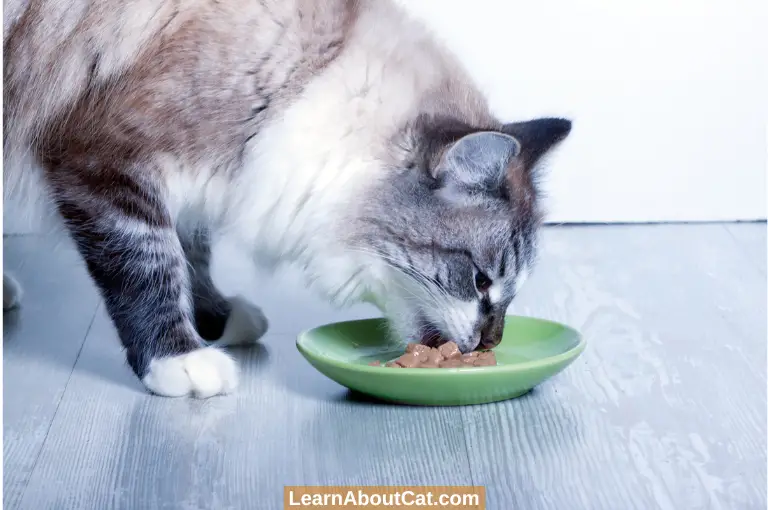
Why Do We Feed Dry Food?
Feeding is the practice of continually giving a cat food. The exact time varies depending on the manufacturer; some recommend picking it up after an hour, and others recommend leaving it out for four. In any case, dry food may be left out all day to give your cat the freedom to eat whenever they choose.
Wet food must be consumed the same day it is opened; dry food has a longer shelf life. Unsealed packets can be stored in the refrigerator for a little bit longer than dry food, which is frequently packaged in resealable bags and can be kept and used for several weeks. You may buy food in bulk for more convenience and financial savings by storing it unopened for several months since the food will frequently stay fresh.
Less odour – Dry food emits less odour both during and after digestion. The meal itself may have a little unpleasant smell when you serve your wet cat food, and once it has been digested, the faeces will smell worse than it does after eating dry food.
Less mess – On a similar note, it makes less mess both before and after consumption. It is much simpler to pick up dry kibble than chunks of beef mush if your cat is an energetic eater who frequently flicks food crumbs out of their bowl. Although your cat’s stomach may take some time to acclimatise to a new diet, cats who consume dry food often have tougher, more solid faeces.
Cheaper – Even if the meal isn’t of high quality, wet food has a premium price tag. Even the most expensive dry food kibble often only accounts for a tiny fraction of the cost.
Interesting Reading: Is It OK if My Cat Only Eats Dry Food?
How Can I Soften Dry Cat Food?
Some felines can’t eat canned food even if it offers great advantages. Some cats just dislike the texture. However, for some cats, it may be hard to chew on dry kibble. Whatever the cause, you can use the following techniques to soften dry kibble and improve the chance that your cat will finish all its food. This is a great alternative if your cat enjoys a certain brand or kind of dry food since the nutrients and flavour will stay the same while the consistency changes.
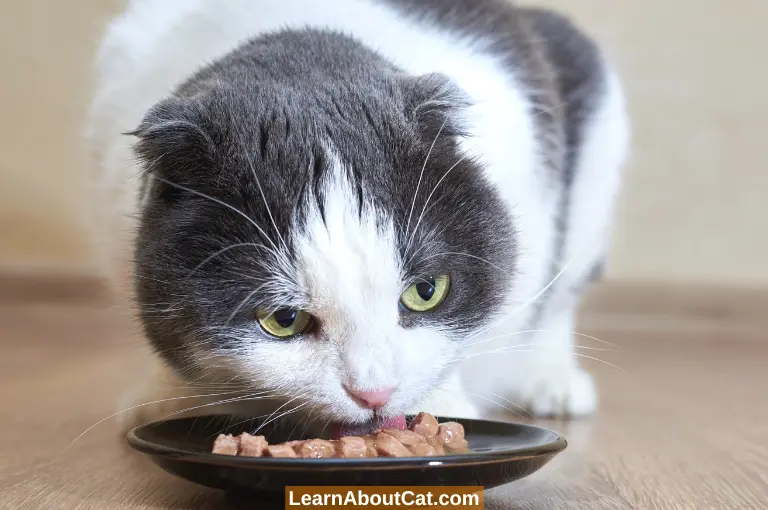
Similarly to this, if your cat has to swallow a certain type of dry food but finds it challenging to do so due to her teeth, you could consider softening the food before attempting to transition to wet food options.
Even cats with poor or nonexistent teeth can occasionally ingest kibble. They can either swallow the food whole or can at least partially chew it (you can soften it by adding water) because of their gums’ increased toughness. To make it easier for your cat to consume, you may still want to soften her food gently.
1. Add Fresh Water
Adding water is among the simplest techniques for making dry cat meals soft. The dry meal will absorb the water, softening it. However, there are 3 recipes that you can follow for making dry food moist by adding water, depending on your cat’s choice:
Simple Way:
- Add 1 cup of water if you’re taking 3 cups of dry cat meal. Soak it for 15-20 minutes.
- Don’t use boiled water; only use pure, ice-cold water from the faucet.
- Avoid adding excess water, or it may turn into mush.
- Particularly on warm days, avoid leaving leftover mushy food outside. Immediately throw it away if your cat hasn’t completed it just after half an hour because it’ll be spoiled.
Increasing the Texture’s Chewability
- Add 1 portion of hot water to your 3 cups of cat’s meal.
- Soak it for 5 minutes. Now discard any remaining water.
- Give the meal five more minutes to settle before serving.
Adding Creamier Consistency
- Add 1 portion of hot water to 3 portions of your dry cat food. Soak it for 10-15 minutes. After that, use a hand blender to mix it into a purée before serving.
- You can also mash the food before adding water.
- If you wish to smoother out the texture, simply add additional water.
- This technique is only for those felines having trouble eating their meal, making it ideal for senior cats along with nursing kittens.
2. Add Flavour (Broth or stock)
We strongly advise swapping broth for water if your feline wants some additional assistance to consume. This frequently adds more flavour, which might motivate your cat to eat healthier. But be careful of the extra salt and lipids that broth contains. You must purchase broth specially made for cats. Cat-specific broths are frequently available on the internet and at local neighbourhood pet stores.
Gravies are also available and can be helpful. However, the gravy doesn’t moisten the dry food because the dry kibble won’t absorb it. You can follow the same steps of water added to your cat’s diet for pouring the broth into it.
3. Mix With Wet Food
Another Alternative is to feed the kibble with wet food, ensuring that you do not overfeed it and adjusting the amount accordingly. You’ll be able to give your cat whatever she needs in terms of nourishment and moisture. Changing feed amounts is as simple as giving half as much wet food and half as much kibble as recommended.
4. Kitten Formula
It is recommended that kitten formula be used instead of water for softening kibble when transitioning to solid food is the best option for younger kitties. Kitten formula makes your cats’ food creamy and delicious and provides additional calories beyond the dry food.
- Add little by little more water and a small quantity of kitten formula to each meal during the adjustment period.
- After a few days, prepare a meal that has a more digestible texture.
- This is a wonderful method for gradually introducing solid meals into a kitten’s menu without startling their body with massive changes.
5. Add Meat Toppings
Small meal sachets called meat toppings are frequently used to spice up bland food. They are spread over the meal. These toppings are fairly wet, so your cat’s kibble will taste better if you mix some of them. It’ll enhance the taste as well as the scent and attract your feline.
Utilize a damp paper towel
- For this purpose, you need a large dish, some dry kibble, and a paper towel. Follow these steps:
- Food should remain on the platter.
- Give it a spoonful of hot water.
- Apply pressure on the dry kibble with the wet paper towel.
- Give it three minutes, to be.
6. Use Oil (olive oil, almond oil, or salmon oil)
The use of tiny portions of sunflower oil, almond oil, salmon oil or fish oil is an additional technique. Despite the fact that these oils are tasty and beneficial, pay attention to your cat’s caloric intake. You might give less food if you mix it with oils because they’re full of calories. You can also use water and a small amount of oil to moisten the meal
7. Mesh with a Fork
The dry food can be softened with a standard fork. Your cat will start eating right away if you do this. Save this choice until last. This is due to the kibble’s acceptance of having a strange consistency that can irritate your cat. Just a little water will help to soften and mesh the lumps. This technique will require less water, thus maintaining the food taste.
Break Dry Food Into Smaller Pieces
Instead of softening the kibble, you may try breaking it into smaller pieces so that your cat can either swallow it whole or chew on them less.
What to Avoid (Don’ts of Softening Dry Cat Food)
For the health and safety of your cat, it is essential that you comprehend the following issues before attempting to soften any dry cat food.
Never Forget to Consult a Veterinarian
Before altering your pet’s diet, it is crucial to check with a veterinarian to ensure it is safe. Pets on prescription diets need to be very careful about this. Different pet foods are developed to meet different nutritional requirements. Additionally, bad decisions might have unfavourable effects.
Don’t use Too much Liquid
Calculating the correct amount of liquid required for your cat’s serving size is essential. We may avoid diluting the dish by using too little water by doing. If the dilution is too high, the food may lose its flavour, turn off your cat, or satisfy it before it has consumed enough nutrients.
Don’t Leave The Soften Food Out For More Than 30 Min
It is necessary to serve the food within 30 minutes of the time it is prepared and remove it within 30 minutes, even if it has not been consumed. A softened cat food contaminated with bacteria will spoil quickly once it settles.
Find Out: When Do Kittens Start Eating Food And Drinking Water?
What Justifies are Cats Needing Soft Dry Cat Food?
A type of dry cat food that is softer than kibble, soft dry cat food is what it sounds like. It is a little bit softer since it is moister than kibble but not as wet as canned food. There are several reasons you might be seeking soft dry cat food if your cat only eats kibble. Here is a detailed look at every justification for purchasing soft dry cat food, from dental issues to dietary adjustments.
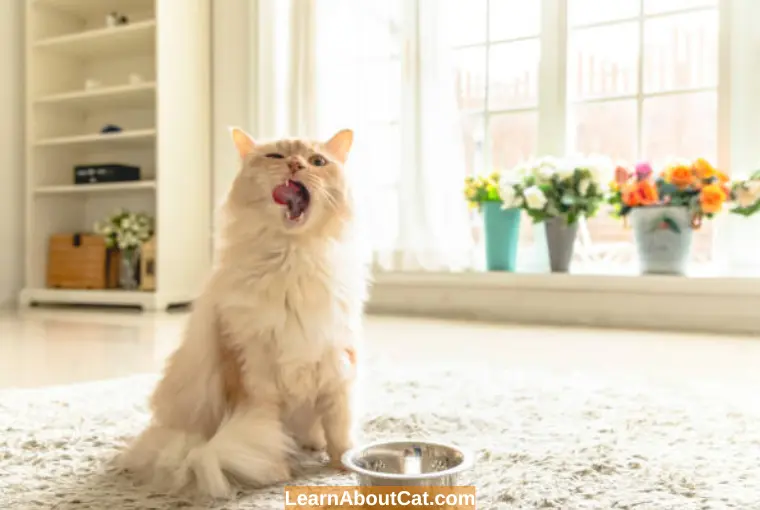
1. Making the Switch to Wet Canned Food
For a variety of reasons, including helping kittens transition from milk to kibble, you might want to alter your cat’s diet from dry to wet. You could want to try a great wet food you’ve recently discovered, or your cat might need a special diet that is only available in wet food and has been prescribed by your veterinarian.
Transitioning your cat from dry kibble to wet canned food can be difficult. Because cats are creatures of habit, they could stop eating if you abruptly disrupt their pattern.
2. Kittens and Seniors Have Special Needs
This food is beneficial for young and older cats and is important for your cat at different stages of its life.
First of all, older cats are more likely to have the aforementioned dental issues. As they become older and mature, their teeth will start to degrade gradually, much as our own teeth do. As a result, felines will find eating to be more uncomfortable and choose meals that are less harsh on their gums.
Cats will also start losing teeth as they become older, and this process will continue. Some felines could eventually lose all of their pearly whites! The lack of teeth in this situation may make it more difficult for them to chew on rough food, even after fully recovering from any dental surgeries. Once more, this makes soft dry food a far superior substitute.
Senior cats are more prone to stomach issues, which may need them to convert to a softer diet and a higher likelihood of developing dental issues.
Check Out: What To Do With Leftover Cat Food?
What Benefits Does Wetting Dry Cat Food Offer?
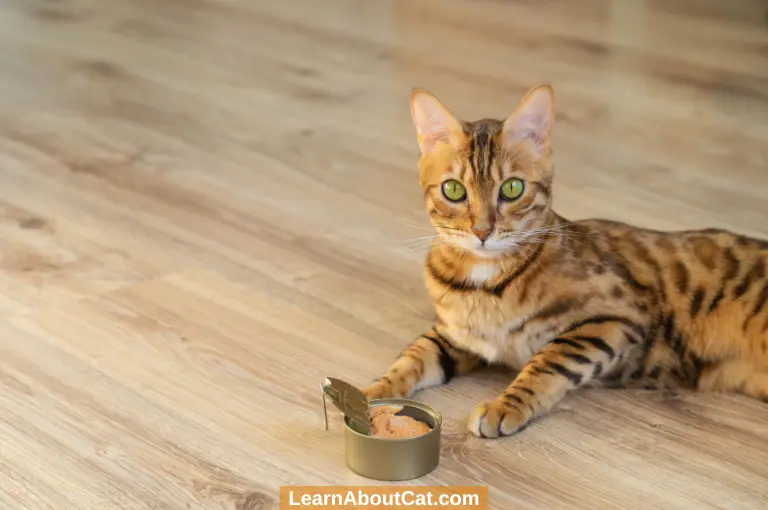
1. Increasing Regular Water Intake
Water can be added to dry foods to boost their daily water intake. I argue that the biggest advantage is the problems that dehydration causes.
- Disorders of the urinary system and blood flow (UTIs)
- High electrolyte imbalances
- Dehydration, urinary crystals, and delayed digestion are typical issues with a cat’s diet short in the water.
2. Support for Digestion
Actually, not every part of what’s in your cat’s mouth is properly chewed and ingested. It is unavoidable that some meals, when fully ingested, may result in digestive problems. Therefore, including some water can help with digestion. These unforeseen components are then reduced and made palatable.
3. Get Rid of Fast Eating
The rate at which your cat may devour dry cat food, such as kibble, is one problem. Okay, she should basically agree to it right immediately. Do you concur that the local trash in the Lapps is like a storm?
Feeding your pet quickly is challenging since they constantly end up throwing up. In addition, you’re cleaning. There is nothing wrong other than that!
4. Decreased Bloat
The cat will absorb the moisture from the wet stomach and disperse it throughout its body once the dry meal is done and the water has reached the wet stomach.
If you stretch this chicken and add water to lessen bloat and vomiting, your cat will be satisfied at the proper moment and stop overeating while it is eating. A desire to improve the mission. Maybe eating too much or too soon isn’t a problem for you. Perhaps your problem was the reverse. Your cat doesn’t have enough food to eat.
5. Enhanced Flavour
Water that is just wet enough to fill the container halfway, not too hot nor too cold. The final product may have a distinct texture, flavour, and aroma from your normal dried cardboard kibble.
Optional Homemade Soft Foods
Making anything from scratch at home could be better than purchasing canned food that has been softened or buying wet food that has been canned.
If you have the time, I believe this might be a fantastic approach to ensure that your cat is eating the healthiest food that is regrettably included in the majority of boxed and processed goods.
However, the problem with homemade recipes is that you could forget to include anything, add too much, or add too little. Therefore, I advise showing your recipe to your veterinarian and getting their clearance.
Alternatively, you may mix things up and give your cat a healthy diet by giving it both prepared food from the supermarket and homemade food.
Another thing to think about is calorie and amount control while giving your cat home-cooked food. It doesn’t come in packaging; therefore, calculating the caloric value and macronutrient ratios may be difficult. Here is a thorough examination of all the substitutes for homemade soft cat food:
1. Cooked Meat Purée
You may prepare fish, red meat, chicken, or turkey at home without using any human food flavours enhancers like spices, herbs, onion, or garlic. Although technically not home-cooked, canned tuna, salmon, or sardines nonetheless function well.
To make the cooked beef soft and easy to eat, purée it. To give the meat flavour and soften it, you may combine it with very little amounts of healthy oils (such as olive, almond, or salmon oil), water, or broth.
2. Garnishing with Chicken Broth
It may be used as a topping to traditional meals to enhance their flavour, pique your desire, or provide nourishment. As was previously said, homemade broth is always the best. By doing this, you can ensure that there isn’t any salt or other flavourings that might harm your cat.
Make homemade chicken broth with this really simple recipe:
The chicken should first be cooked in a pan of boiling water with the skin and bones still on. After the chicken has finished cooking, you may remove the meat and only use the water as stock. Alternately, combine everything to get a thicker broth.
You could also decide to add a variety of vegetables to your soup to provide some healthy vitamins and minerals.
3. Raw, Ground Meat
Raw meat diets for cats have become more and more common over the past few years. Many recipes call for egg yolks, fish oil, water, and organs when using raw meat (such as the liver or heart). For your requirements, these ingredients will be combined in different ratios to create products with a range of textures, smells, and consistencies.
While preparing a meal that contains raw meat, there are a number of aspects to consider in terms of comfort and safety. The meat must be extremely fresh to avoid the possibility of harmful viruses like salmonella or other parasites lying on its surface.
Senior Cat Feeding Considerations
Due to their advanced age, senior cats frequently experience dental issues. Therefore, all of the options I’ve listed above may be taken into account when caring for elderly cats that have dental problems and have trouble consuming the food they’ve grown accustomed to over the years.
However, I want to concentrate more on the food requirements and digestive problems unique to senior cats in this area.
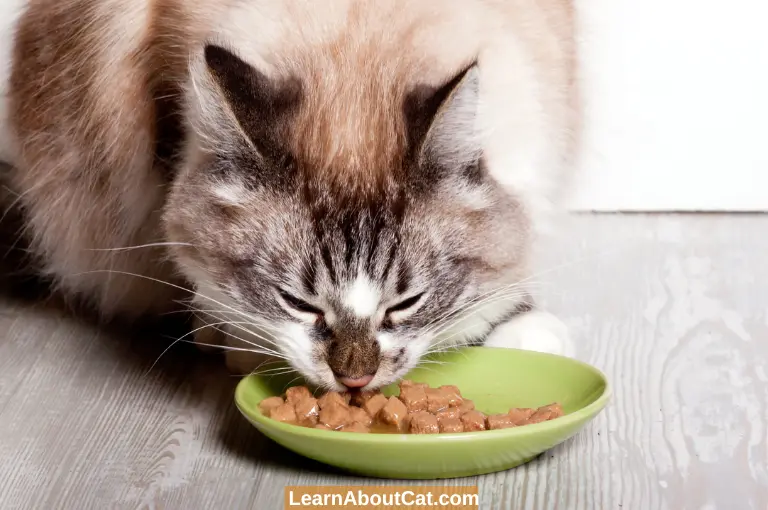
1. When should I Feed My Cat Senior Cat Food?
Many owners switch to cat food formulated for older cats when their cat reaches old age. Whether wet or dry, senior cat meals differ somewhat from those for younger cats in a few small ways. Senior cat food often has less protein and carbohydrates and more fibre than regular adult cat food.
According to experts, senior cats don’t necessarily need a specialised diet unless they have diseases or disorders that demand it. Leave your cat alone if they are content to eat the familiar kibble; don’t switch to a special “senior” cat food without first contacting your veterinarian.
Sometimes choosing a cat food designed for senior cats won’t cut it and may even be harmful to your cat!
Muscle atrophy is one of the reasons switching to a senior cat diet might be harmful. In older cats, muscle loss is a regular issue. This is primarily due to the decreased activity and energy that comes with being older, but it is also a result of switching unnecessarily to senior cat food with low levels of protein.
2. Does My Cat Need Vitamin Supplements?
If senior cats eat a balanced, nutritious diet, they won’t need vitamin and mineral supplements. However, supplements could be helpful if your cat has a particular medical issue.
For instance, some gastrointestinal conditions that are more prevalent in older cats might hinder the blood’s ability to absorb vitamin B12. These cats frequently have a vitamin B12 shortage as they cannot obtain this from their food. In these situations, your veterinarian could advise vitamin supplements to raise the amounts in their body to the recommended level.
3. Do I Need to Alter the Amount of Food?
Keep in mind that senior cats have far less energy than younger cats. Senior cats that are less active should not continue to consume the same quantity of the food as they did when they were younger and more active since this can result in weight gain, obesity, and a host of other related health problems that should be avoided.
Fortunately, most senior cat feeds consider this and may contain fewer calories per unit than the food your cat was previously eating. When deciding, take into account the way of life and the degree of activity of your cat.
4. How Do I Change My Cat’s Diet?
As you can see, due to a variety of illnesses and medical problems, each senior cat will have unique demands. As a result, you should alter your cat’s diet if the food doesn’t fit its unique needs. Suddenly switching your cat’s regular diet without first seeing your veterinarian simply because she turned 10 years old can bring more damage than good.
Your veterinarian only knows the intricacies of this, so please ask them before switching to a new diet. If you decide to alter your cat’s diet on your veterinarian’s suggestion, make the transition gradually and follow the tips listed above.
5. When Should I Talk to my Veterinarian?
You shouldn’t need to particularly discuss your cat’s diet with your veterinarian if it appears to be content, healthy, and eating its food as normal. Your veterinarian will be able to advise you on whether your pet’s food needs to change based on its current health state during routine checkups.
But it’s always a good idea to keep an eye out for indications that your cat may be putting on weight or experiencing digestive issues. This is especially true when she gets closer to the age of ten or eleven. As she approaches senior status, she might need to make a few minor dietary changes to ensure she gets all the nutrients she needs from her meals.
Wet vs Dry Cat food
There is much debate about whether dry or wet cat food is better. It’s important to strike a balance between the two.
Actually, experts usually suggest serving wet and dry food on the same plate. The variety of textures, fragrances, and forms that this blend produces may appeal to your cat. I’ll go through some of the arguments in favour of and against feeding dry and wet cat food.
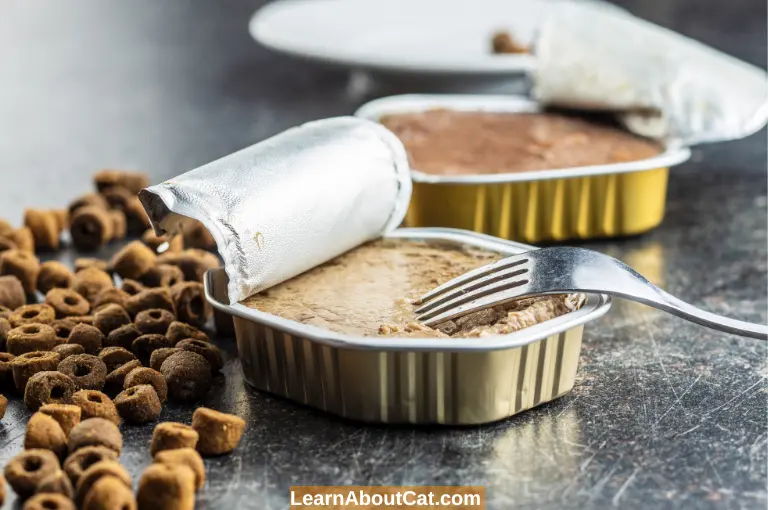
1. Health and Nutritional Factors
The food you provide your cat should meet both its nutritional needs and its desire to eat. Because wet and dry food contains different minerals and quantities of water, choosing food suited to your cat’s needs is crucial.
Cats must eat genuine animal meat to survive since they are obligate carnivores. Take into account the fact that cats in the wild rely on hunting and devouring minute prey items like mice and tiny birds to survive. Therefore, it’s important to have a balanced diet that provides enough lean meat to provide an appropriate amount of protein. Wet food proponents assert that wet canned food is more likely than kibble to satiate these desires.
2. Convenience and Low cost
Although we looked into cat preferences, knowing what you like is equally crucial! And from my experience, the biggest variables that influence owners’ decisions for their cat’s food are frequently cost and convenience.
Because it is frequently less expensive than wet food, dry food is a more common option when it comes to eating. Furthermore, you can frequently get superior dry food for the same price as subpar wet food. Therefore, someone on a tighter budget would want to feed their cat dry kibble. This does not, however, imply that all dry food is inexpensive and all wet food is costly. The fact that dry food is almost always more convenient cannot be contested.
3. It’s your Feline’s Buddy’s Choice
Do cats prefer one kind of food over another? Maybe not always, though. They would prefer the food they are accustomed to eating. A cat is more likely to prefer kibble to wet food if it has always eaten kibble, but the reverse is also true. However, it is occasionally advised to feed cats wet food when they lose their appetite since it is flavorful and encourages them to eat more.
4. Oral Health
It’s a prevalent misperception that consuming mostly moist meals would be detrimental to your oral health in the long run. People firmly think that chewing on rough kibble maintains the health of their teeth. This is also supposed to clean the teeth and get rid of any plaque that has built up over time. This reduces the possibility of developing dental issues like those outlined above.
However, recent studies like this one have started to challenge this claim. From an evolutionary standpoint, cats’ teeth are designed to tear apart fresh flesh; thus, they swallow their meal without much chewing. They don’t rely on kibble to keep their teeth strong and healthy as a result.
What to Feed a Cat Who Has Dental Diseases?
Dental problems are the most common reason a cat used to eating kibble needs soft dry cat food. Older cats are more likely to have dental problems than younger cats, and many cats eventually develop tooth decay or gum disease.
These dental problems are caused by a number of things, including:
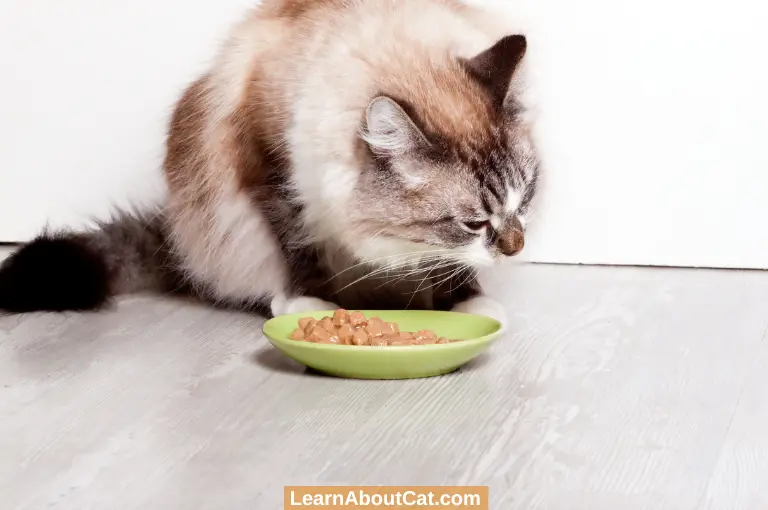
Periodontitis is the mouth: This condition can weaken the tissues that cover the teeth and gums and affect the structures that keep the teeth in the mouth. This could lead to tooth loss.
Resorption of the tooth: The inside of the tooth starts to degrade.
Gingivitis: The gums around your cat’s teeth expand and inflame when plaque accumulates on the teeth.
Your cat may require tooth extractions if they have dental problems. This can minimise the discomfort caused by tooth decay and limit the disease’s progress. Your cat’s mouth may appear unusually sensitive during the healing phase after a dental operation to long-term issues like tooth loss.
However, switching from kibble to wet canned food could be difficult. Cats are renowned for being fussy, choosy, and resistant to change! When wet food is introduced immediately, cats typically reject it, leaving them undernourished and stressed. While this is unpleasant at all times, it is particularly bad for sick or recovering cats that have had dental work done.
Dry meal choices that are kinder are, therefore, usually chosen. It creates a win-win situation by striking a perfect balance between the unpleasantness of eating and the intended flavour and delight.
Interesting Reading: My Cat Ate a Whole Bag of Treats: What Should I Do?
Frequently Asked Questions
How long should you soak dry cat food?
Your cat’s dry food should be soaked in water for about 10-15 minutes (or broth). Add more water if the food is too hard.
Can you soak dry cat food in warm water?
If dry kibble is soaked with warm water, the meaty fats within it will warm, causing the smell to be released, which your pet finds appealing.
Can I mix dry cat food with milk?
No. Mixing cat food and milk is not recommended for several reasons. Cats who are lactose intolerant are most likely to get sick when they drink milk. After drinking milk, they often experience digestive problems.
It is also essential to keep in mind that milk can go bad before your cat finishes the food. This can result in your cat becoming quite ill after eating it.
How long should dry food be kept out?
Even if it hasn’t been eaten, the food must be served as soon as it is finished and removed within an hour. When moisture is introduced to dry pet food, any germs present are encouraged to develop and increase. This might make dogs ill and contaminate food in just a few hours.
What’s the point of softening dry food when you can just use wet food?
There are several advantages to using dry food, including its ease of storage and affordability.
There are more calories in dry food since it does not contain moisture.
It has a less intense smell than wet food and seems more comfortable to keep at home.
The benefit of softening dry food is that it provides water and maintains its nutritional value.
Can you grind up dry cat food?
If needed, you can grind cat food in a blender. But you must first cover the food with a large quantity of water or stew and let it rest for a bit. If not, you’ll get food that has been mashed rather than mixed. Maintaining the texture when you’re using the blender is something else we advise. When you blend dry cat food, you’ll see you need more water but don’t put a lot that makes it soupier.
Final Thoughts!
For your cat to have a healthy, long life, you, as the owner, want to ensure that they receive the best food you can afford. I suggest avoiding getting too drawn into every argument and resisting taking a side.
It’s fantastic if you have strong opinions but always have an open mind. I constantly try to stay current on my reading about cat health and be receptive to new ideas and conversations.
I think the key is balance. If you’re unsure whether wet or dry food is healthier, follow a diet combining both. Look for preferences in your cat and keep an eye out for any evident changes in her general health. If you have any questions, speak with a specialist.
Related Posts:
Who is Isabella?
My name is Isabella, and I am a dedicated and knowledgeable cat enthusiast. With years of experience caring for cats and a deep love for felines, I made a mission to help other cat lovers navigate the challenges of cat ownership.


